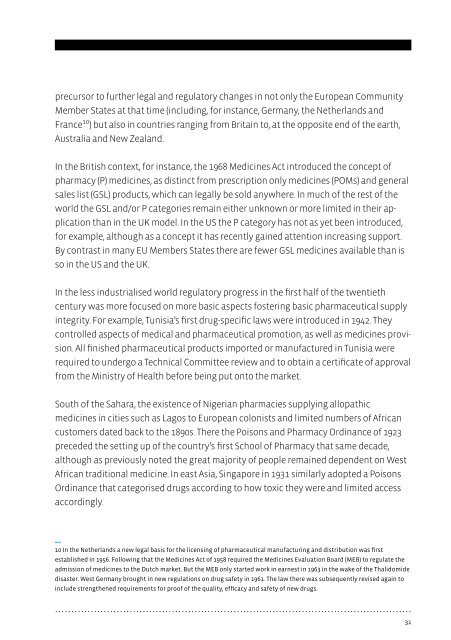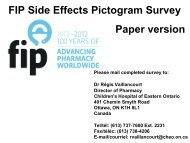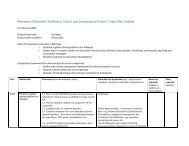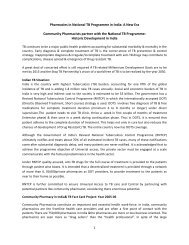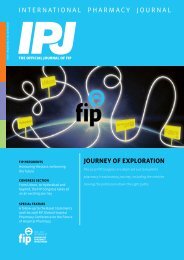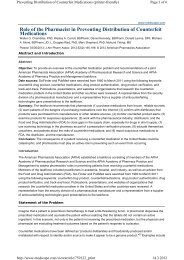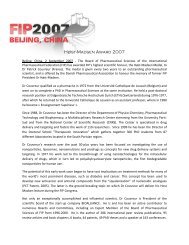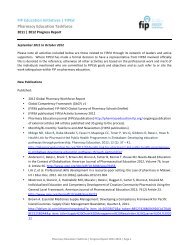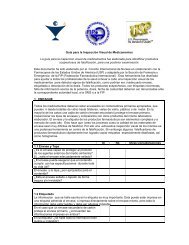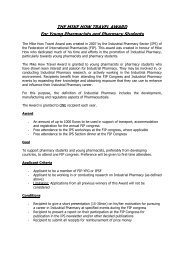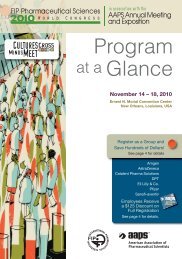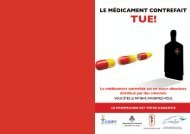Contents - FIP
Contents - FIP
Contents - FIP
Create successful ePaper yourself
Turn your PDF publications into a flip-book with our unique Google optimized e-Paper software.
precursor to further legal and regulatory changes in not only the European Community<br />
Member States at that time (including, for instance, Germany, the Netherlands and<br />
France 10 ) but also in countries ranging from Britain to, at the opposite end of the earth,<br />
Australia and New Zealand.<br />
In the British context, for instance, the 1968 Medicines Act introduced the concept of<br />
pharmacy (P) medicines, as distinct from prescription only medicines (POMs) and general<br />
sales list (GSL) products, which can legally be sold anywhere. In much of the rest of the<br />
world the GSL and/or P categories remain either unknown or more limited in their application<br />
than in the UK model. In the US the P category has not as yet been introduced,<br />
for example, although as a concept it has recently gained attention increasing support.<br />
By contrast in many EU Members States there are fewer GSL medicines available than is<br />
so in the US and the UK.<br />
In the less industrialised world regulatory progress in the first half of the twentieth<br />
century was more focused on more basic aspects fostering basic pharmaceutical supply<br />
integrity. For example, Tunisia’s first drug-specific laws were introduced in 1942. They<br />
controlled aspects of medical and pharmaceutical promotion, as well as medicines provision.<br />
All finished pharmaceutical products imported or manufactured in Tunisia were<br />
required to undergo a Technical Committee review and to obtain a certificate of approval<br />
from the Ministry of Health before being put onto the market.<br />
South of the Sahara, the existence of Nigerian pharmacies supplying allopathic<br />
medicines in cities such as Lagos to European colonists and limited numbers of African<br />
customers dated back to the 1890s. There the Poisons and Pharmacy Ordinance of 1923<br />
preceded the setting up of the country’s first School of Pharmacy that same decade,<br />
although as previously noted the great majority of people remained dependent on West<br />
African traditional medicine. In east Asia, Singapore in 1931 similarly adopted a Poisons<br />
Ordinance that categorised drugs according to how toxic they were and limited access<br />
accordingly.<br />
10 In the Netherlands a new legal basis for the licensing of pharmaceutical manufacturing and distribution was first<br />
established in 1956. Following that the Medicines Act of 1958 required the Medicines Evaluation Board (MEB) to regulate the<br />
admission of medicines to the Dutch market. But the MEB only started work in earnest in 1963 in the wake of the Thalidomide<br />
disaster. West Germany brought in new regulations on drug safety in 1961. The law there was subsequently revised again to<br />
include strengthened requirements for proof of the quality, efficacy and safety of new drugs.<br />
31


